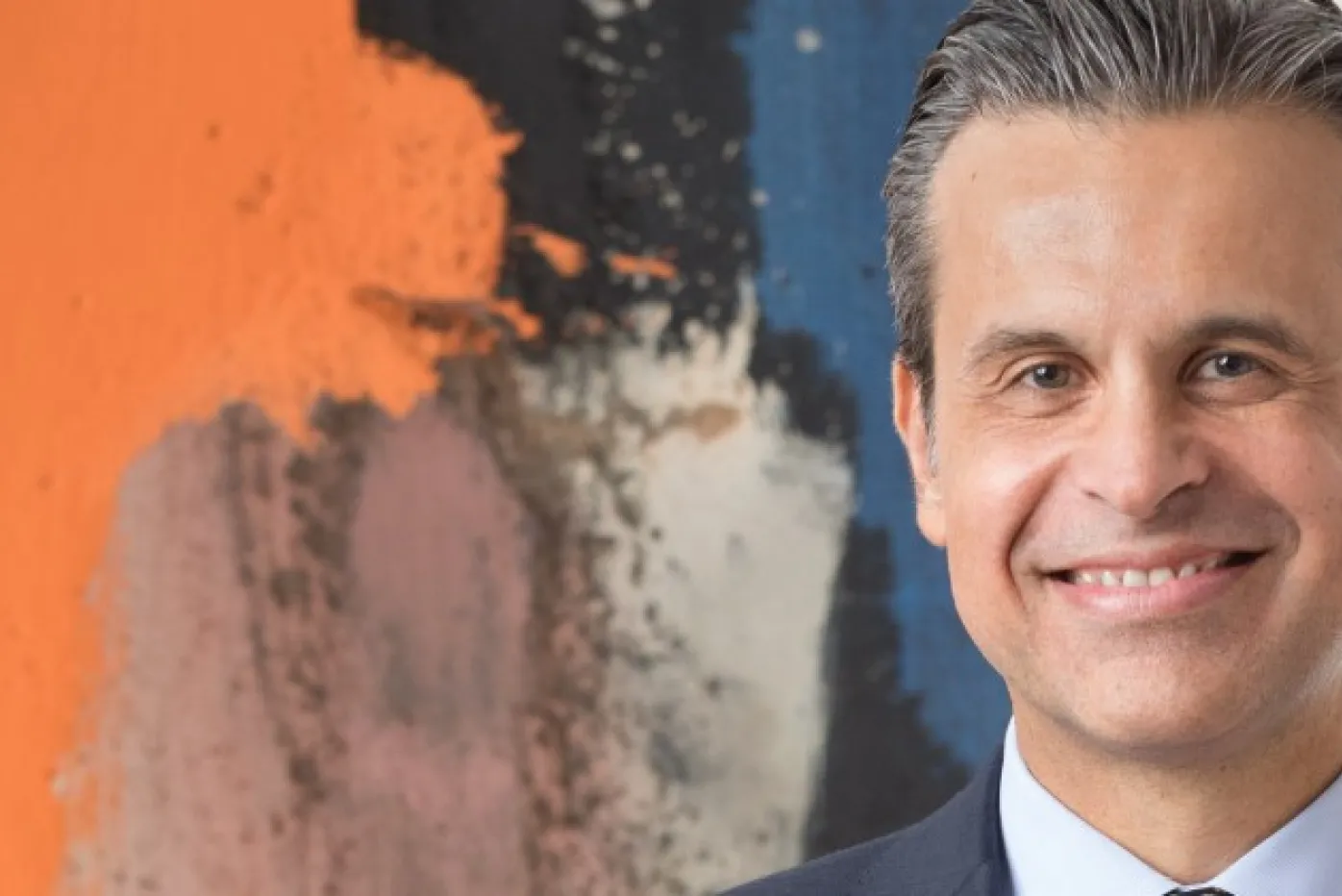From the Director, August 2020
Updated Jul 20, 2022
A welcome conversation
Over the past few months, important discussions in our country have expanded to include the cultural sector overall and art institutions in particular. The DIA has recently become part of this conversation – a conversation that I welcome and encourage. The role of the arts -- the role of the DIA – and its impact on social issues is a topic on which we have focused much energy, time and thought over the past several years and one that deserves even more of our attention in the future.
This is a national conversation, and among many the issues being addressed are workplace culture, institutional racism, historical context and racial and cultural dynamics. Some of the conversations also have included accusations of misconduct, mismanagement, systemic racism and specific racism.
Allegations of misconduct have been made against me and the DIA. Even though the complaints have been limited and anonymous, I take them seriously, as does our Board of Directors (click here for statement). While we have done a lot of work in the areas of workplace culture as well as inclusion, diversity, equity and access, we have much more to do, and we need to do it with more urgency while listening to all points of view. Our people are a top priority for the organization. During the pandemic, we have focused on protecting our staff and our collection, so that we can continue serving the tri-counties at the highest level.
As you may have read, there has been a whistleblower complaint that contains allegations regarding two loans of art to the DIA from my father-in-law, the first in 2010 and the second in 2019. Immediately upon receiving the initial complaint, which was provided to the DIA by the press and not the whistleblower or its representatives, the DIA’s Executive Committee retained an independent law firm to investigate the allegations.
While that investigation is ongoing, I would like to provide some background on art loans. It is a common practice in American museums to receive long-term loans of works of art by artists who are not well represented in the collection, so we can enhance the visitor experience, provide educational opportunities, and allow us to cultivate patrons for possible gifts of art. This practice has factored significantly in the DIA assembling its extraordinary collection. The museum followed its collections management policy as well as its professional practices policy and guidelines and both loans were disclosed to and approved by our board chair. We believe those policies to align with best practices among American art museums. Still, to ensure that the best policies are in place going forward, the review conducted by the independent law firm will include a review of the museum’s policies, in addition to my compliance with them.
This attention has raised additional media questions. Just last week, I spoke with a New York Times journalist who asked me about our visitor-centered approach as well as our outreach to African American communities. We expect he is writing a story based on the premise, heard from former employees, that we are no longer taking a visitor-centered approach to our work and that this has caused poor outreach to Black communities in Detroit. During the interview, I shared with him a definition of a visitor-centered museum that resulted from the 2007 reinstallation and shared with me by our former director: “A visitor-centered museum is an institution where all aspects of the institution’s operations are prioritized and designed to foster the physical and intellectual comfort of the general visitor; creating an environment that helps individuals engage with the art on their own terms.”
I explained to the journalist that we continue to operate as a visitor-centered organization as defined above. Further in our conversation, I reflected on why it is critical to be visitor-centered, emphasizing that it helps the DIA be relevant to our communities and attract them to our exhibitions and programs. There are ways to measure relevance, and one of the most straightforward is museum attendance, which has been increasing since the passage of the millage in 2012. Furthermore, at the DIA we had the opportunity to test our relevance earlier this year on March 10 when the residents of Oakland, Wayne and Macomb counties voted to renew that millage. The results were overwhelming. During the initial vote in 2012, about 375,000 residents voted “yes.” In 2020, nearly 700,000 residents voted “yes” to continue financially supporting the museum. They voted “yes” because we are relevant to them and want the DIA to continue serving the community.
It is important to remember, as I mentioned in my interview, that we work with the community to decide many of our programs and exhibitions. For high-impact projects, we engage with focus groups and community advisory panels, do label testing, create response stations and special interpretive labels, and perform visitor exit surveys, among other things to ensure that our presentation in the galleries is visitor-centered. Unfortunately, we need to be selective since we don’t have the resources to do this work for every exhibition or gallery project.
We also engage the community to create programs. For several years, we have worked with members of the African American communities to shape our offerings for Black History Month. This has been a very fruitful collaboration and was recently and powerfully remembered by a Detroit intellectual leader and poet Marsha Music in her blog (click here to read)(opens in new window). The number of programs and exhibition designed to serve our African American communities has increased over time and we provided the reporter with a three-page overview of the last two years’ programs. The DIA’s auxiliary group, Friends of African and African American Art (FAAAA), has done remarkable work during the last few years, led by its chair Leland Calloway. FAAAA played a key role in last year’s Gala, celebrating the exhibition Detroit Collects: Selections of African American Art in Private Collections. That evening the museum was transformed.
We continue to diversify our collections with the goal to present a balanced display of creativity (click here to learn more) and we continue to diversify our board and staff to reflect the demographic make-up of the communities in the region we serve. While we have taken positive steps, for example, establishing a paid internship program to expand access to the museum field, we still have more to do to create a successful environment for inclusion, diversity, equity and access. This continues to be a top priority for our organization and for me personally.
Over the last few years, the DIA team has made progress not only serving the African American communities, but also the Latino and the Asian communities, thanks to the Ofrendas and Labor of Love exhibitions as well as the reinstallation of the Asian wing. Similar efforts are underway with the region’s Arab American community and Native and Indigenous communities. We can always do better and more, and we will strive to do so.
We are extraordinarily blessed to be financially supported by the residents of Oakland, Wayne, and Macomb counties, which provide the DIA with 65% of its yearly operating needs. This financial support is reinvested back into the counties through our art service agreements, thanks to which we bring students to the DIA on free field trips (90,000 in 2019, our all-time record) and seniors through our Thursdays at the Museum program. Our community partnership program allows us to go beyond the walls of the DIA to serve the residents of the cities, townships and villages within the tri-counties. Thanks to these service agreements, we have become a tool for our communities.
As I shared these activities with the Times reporter, I let him know that our business model is unique in the country and therefore difficult to compare with any another museum. Over time, our visitor-centered approach has evolved and has been enhanced to be more inclusive, helping us not only to serve our communities in Detroit, but also those in the three counties, the region, and the state. The results of the vote on March 10 are strong evidence of our growth and success in achieving the goals of our strategic plan established in 2016 and approved by the DIA board. Now is the time to talk in detail with our staff, our community, our board, and our volunteers to craft a new strategic plan, which will help us define the role the DIA will play in our society: locally, nationally and internationally. I look forward to working with all of you to shape the roadmap for our future.
Thank you for your support and confidence that has allowed us to reach this point, and please do contact me with any questions, concerns or suggestions that you may have.

Salvador Salort-Pons portrait, updated Jan 2020
A welcome conversation
Over the past few months, important discussions in our country have expanded to include the cultural sector overall and art institutions in particular. The DIA has recently become part of this conversation – a conversation that I welcome and encourage. The role of the arts -- the role of the DIA – and its impact on social issues is a topic on which we have focused much energy, time and thought over the past several years and one that deserves even more of our attention in the future.
This is a national conversation, and among many the issues being addressed are workplace culture, institutional racism, historical context and racial and cultural dynamics. Some of the conversations also have included accusations of misconduct, mismanagement, systemic racism and specific racism.
Allegations of misconduct have been made against me and the DIA. Even though the complaints have been limited and anonymous, I take them seriously, as does our Board of Directors (click here for statement). While we have done a lot of work in the areas of workplace culture as well as inclusion, diversity, equity and access, we have much more to do, and we need to do it with more urgency while listening to all points of view. Our people are a top priority for the organization. During the pandemic, we have focused on protecting our staff and our collection, so that we can continue serving the tri-counties at the highest level.
As you may have read, there has been a whistleblower complaint that contains allegations regarding two loans of art to the DIA from my father-in-law, the first in 2010 and the second in 2019. Immediately upon receiving the initial complaint, which was provided to the DIA by the press and not the whistleblower or its representatives, the DIA’s Executive Committee retained an independent law firm to investigate the allegations.
While that investigation is ongoing, I would like to provide some background on art loans. It is a common practice in American museums to receive long-term loans of works of art by artists who are not well represented in the collection, so we can enhance the visitor experience, provide educational opportunities, and allow us to cultivate patrons for possible gifts of art. This practice has factored significantly in the DIA assembling its extraordinary collection. The museum followed its collections management policy as well as its professional practices policy and guidelines and both loans were disclosed to and approved by our board chair. We believe those policies to align with best practices among American art museums. Still, to ensure that the best policies are in place going forward, the review conducted by the independent law firm will include a review of the museum’s policies, in addition to my compliance with them.
This attention has raised additional media questions. Just last week, I spoke with a New York Times journalist who asked me about our visitor-centered approach as well as our outreach to African American communities. We expect he is writing a story based on the premise, heard from former employees, that we are no longer taking a visitor-centered approach to our work and that this has caused poor outreach to Black communities in Detroit. During the interview, I shared with him a definition of a visitor-centered museum that resulted from the 2007 reinstallation and shared with me by our former director: “A visitor-centered museum is an institution where all aspects of the institution’s operations are prioritized and designed to foster the physical and intellectual comfort of the general visitor; creating an environment that helps individuals engage with the art on their own terms.”
I explained to the journalist that we continue to operate as a visitor-centered organization as defined above. Further in our conversation, I reflected on why it is critical to be visitor-centered, emphasizing that it helps the DIA be relevant to our communities and attract them to our exhibitions and programs. There are ways to measure relevance, and one of the most straightforward is museum attendance, which has been increasing since the passage of the millage in 2012. Furthermore, at the DIA we had the opportunity to test our relevance earlier this year on March 10 when the residents of Oakland, Wayne and Macomb counties voted to renew that millage. The results were overwhelming. During the initial vote in 2012, about 375,000 residents voted “yes.” In 2020, nearly 700,000 residents voted “yes” to continue financially supporting the museum. They voted “yes” because we are relevant to them and want the DIA to continue serving the community.
It is important to remember, as I mentioned in my interview, that we work with the community to decide many of our programs and exhibitions. For high-impact projects, we engage with focus groups and community advisory panels, do label testing, create response stations and special interpretive labels, and perform visitor exit surveys, among other things to ensure that our presentation in the galleries is visitor-centered. Unfortunately, we need to be selective since we don’t have the resources to do this work for every exhibition or gallery project.
We also engage the community to create programs. For several years, we have worked with members of the African American communities to shape our offerings for Black History Month. This has been a very fruitful collaboration and was recently and powerfully remembered by a Detroit intellectual leader and poet Marsha Music in her blog (click here to read)(opens in new window). The number of programs and exhibition designed to serve our African American communities has increased over time and we provided the reporter with a three-page overview of the last two years’ programs. The DIA’s auxiliary group, Friends of African and African American Art (FAAAA), has done remarkable work during the last few years, led by its chair Leland Calloway. FAAAA played a key role in last year’s Gala, celebrating the exhibition Detroit Collects: Selections of African American Art in Private Collections. That evening the museum was transformed.
We continue to diversify our collections with the goal to present a balanced display of creativity (click here to learn more) and we continue to diversify our board and staff to reflect the demographic make-up of the communities in the region we serve. While we have taken positive steps, for example, establishing a paid internship program to expand access to the museum field, we still have more to do to create a successful environment for inclusion, diversity, equity and access. This continues to be a top priority for our organization and for me personally.
Over the last few years, the DIA team has made progress not only serving the African American communities, but also the Latino and the Asian communities, thanks to the Ofrendas and Labor of Love exhibitions as well as the reinstallation of the Asian wing. Similar efforts are underway with the region’s Arab American community and Native and Indigenous communities. We can always do better and more, and we will strive to do so.
We are extraordinarily blessed to be financially supported by the residents of Oakland, Wayne, and Macomb counties, which provide the DIA with 65% of its yearly operating needs. This financial support is reinvested back into the counties through our art service agreements, thanks to which we bring students to the DIA on free field trips (90,000 in 2019, our all-time record) and seniors through our Thursdays at the Museum program. Our community partnership program allows us to go beyond the walls of the DIA to serve the residents of the cities, townships and villages within the tri-counties. Thanks to these service agreements, we have become a tool for our communities.
As I shared these activities with the Times reporter, I let him know that our business model is unique in the country and therefore difficult to compare with any another museum. Over time, our visitor-centered approach has evolved and has been enhanced to be more inclusive, helping us not only to serve our communities in Detroit, but also those in the three counties, the region, and the state. The results of the vote on March 10 are strong evidence of our growth and success in achieving the goals of our strategic plan established in 2016 and approved by the DIA board. Now is the time to talk in detail with our staff, our community, our board, and our volunteers to craft a new strategic plan, which will help us define the role the DIA will play in our society: locally, nationally and internationally. I look forward to working with all of you to shape the roadmap for our future.
Thank you for your support and confidence that has allowed us to reach this point, and please do contact me with any questions, concerns or suggestions that you may have.

